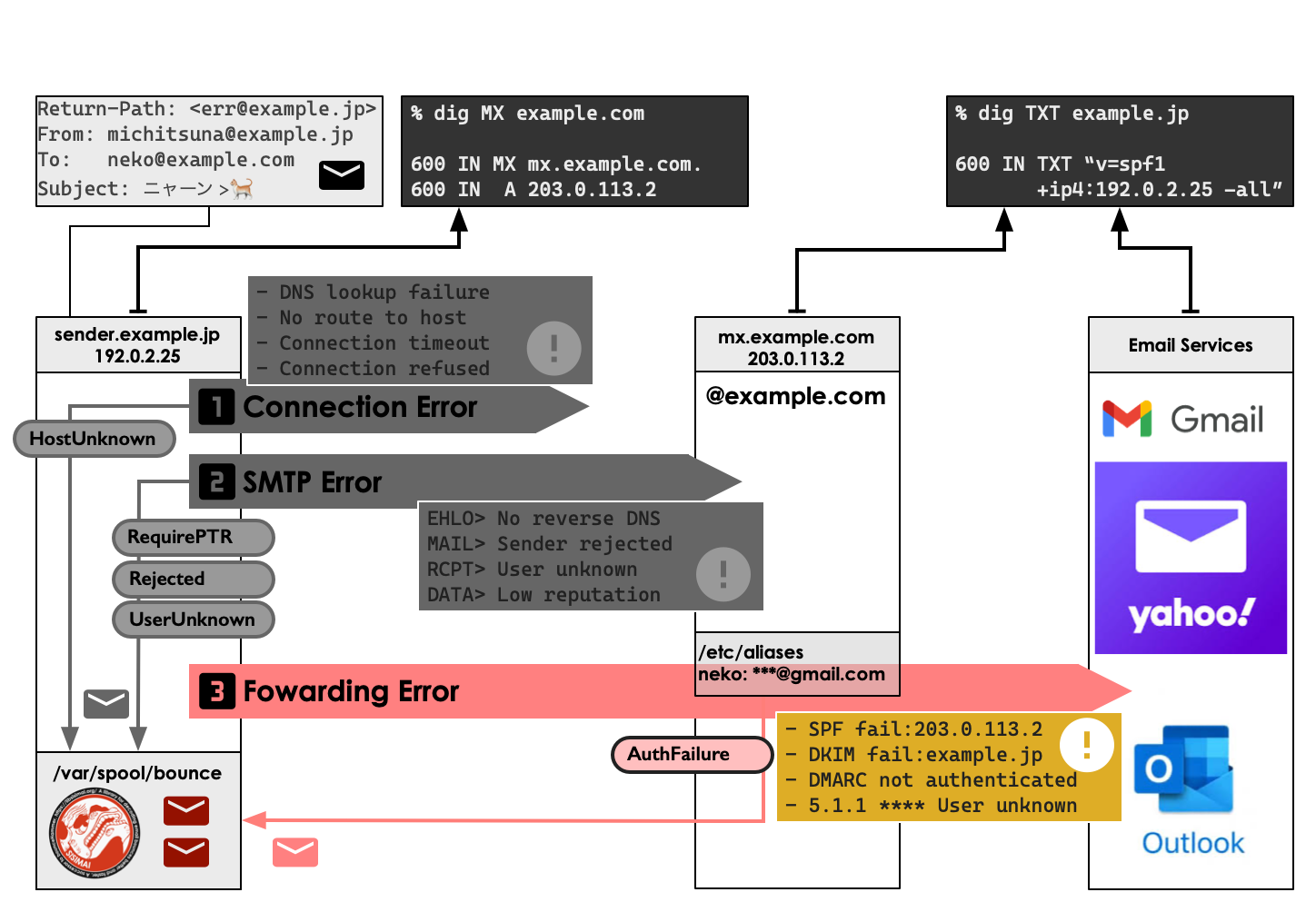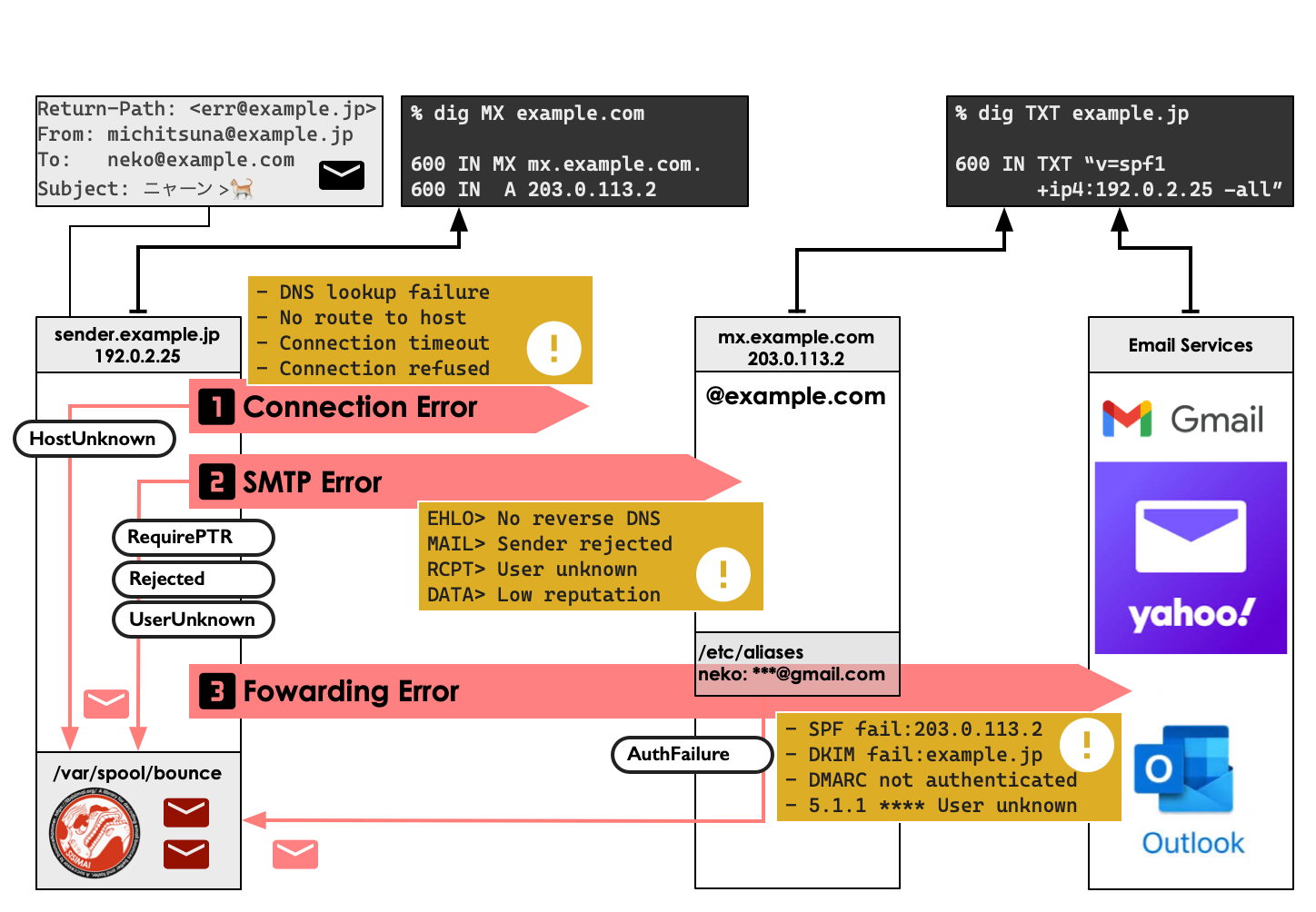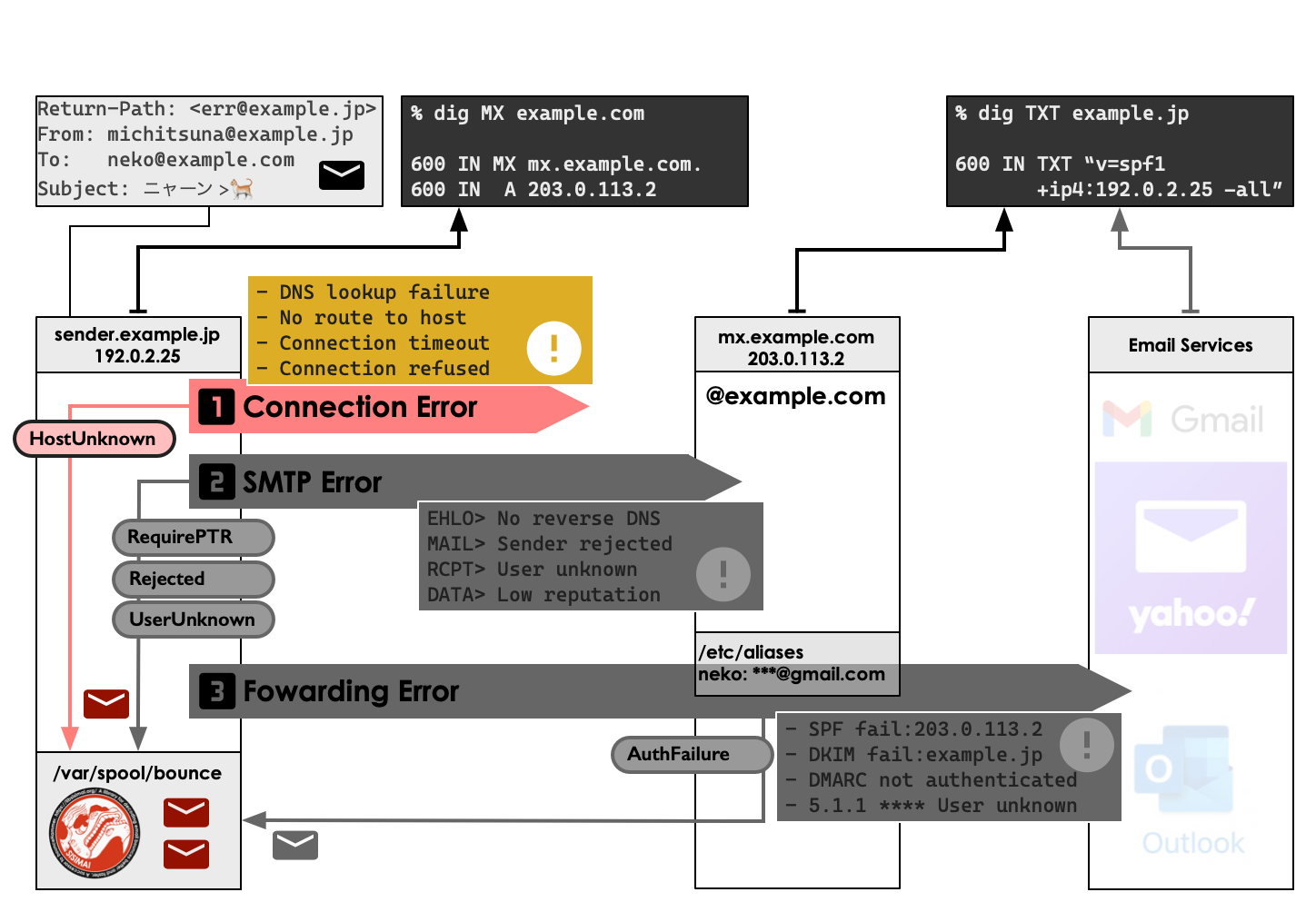During Forwarding (70%)
In many cases, emails sent to an organization's email address are forwarded to
Gmail or Outlook to receive notification on smartphones. However,
since the phased implementation of sender guidelines by Gmail and Yahoo!
starting in February 2024, forwarded emails have become a major contributor to bounces,
with a significant increase compared to previous years.
According to our observations over the past few years, bounces caused by forwarding
errors have accounted for approximately 70% of all bounces.
Specifically, when forwarding emails received at mx.example.com
in the diagram, SPF hard failures or DKIM signature verification failures can occur due to
partial rewriting of the Subject: header or body
(which often happens with mailing lists), resulting in bounces due to
domain authentication failures.
Unlike bounces described in cases 1 (Pre-SMTP connection) and
2 (During SMTP Session) above, bounces in this case are generated by
mx.example.com in the diagram and sent to the email address
specified in the Return-Path: header.

When Sisimai decodes bounce emails caused by domain authentication errors
during email forwarding, the bounce reason is determined to be
AuthFailure.
If the forwarding server (mx.example.com in the diagram above)
supports ARC, ARC-related headers will be added to the email as a technically verifiable
record of the fact that "SPF, DKIM, and DMARC were all OK when we received it,"
which may help the forwarding destination accept the email.
Alternatively, if the forwarding server (mx.example.com
in the diagram above) IP address has a low reputation and the connection is refused,
the bounce reason will be determined to be
BadReputation.
In recent years, domain authentication-related errors, particularly those related to
DMARC and DKIM, have become more prominent. However, bounces caused by nonexistent
recipient email addresses
(UserUnknown)
and neglected recipient mailboxes
(MailboxFull)
are still occurring.
Regardless of the bounce reason, if you are sending a significant volume of emails,
you should consider removing recipient email addresses that generate errors during
email forwarding from your subscribers list.





